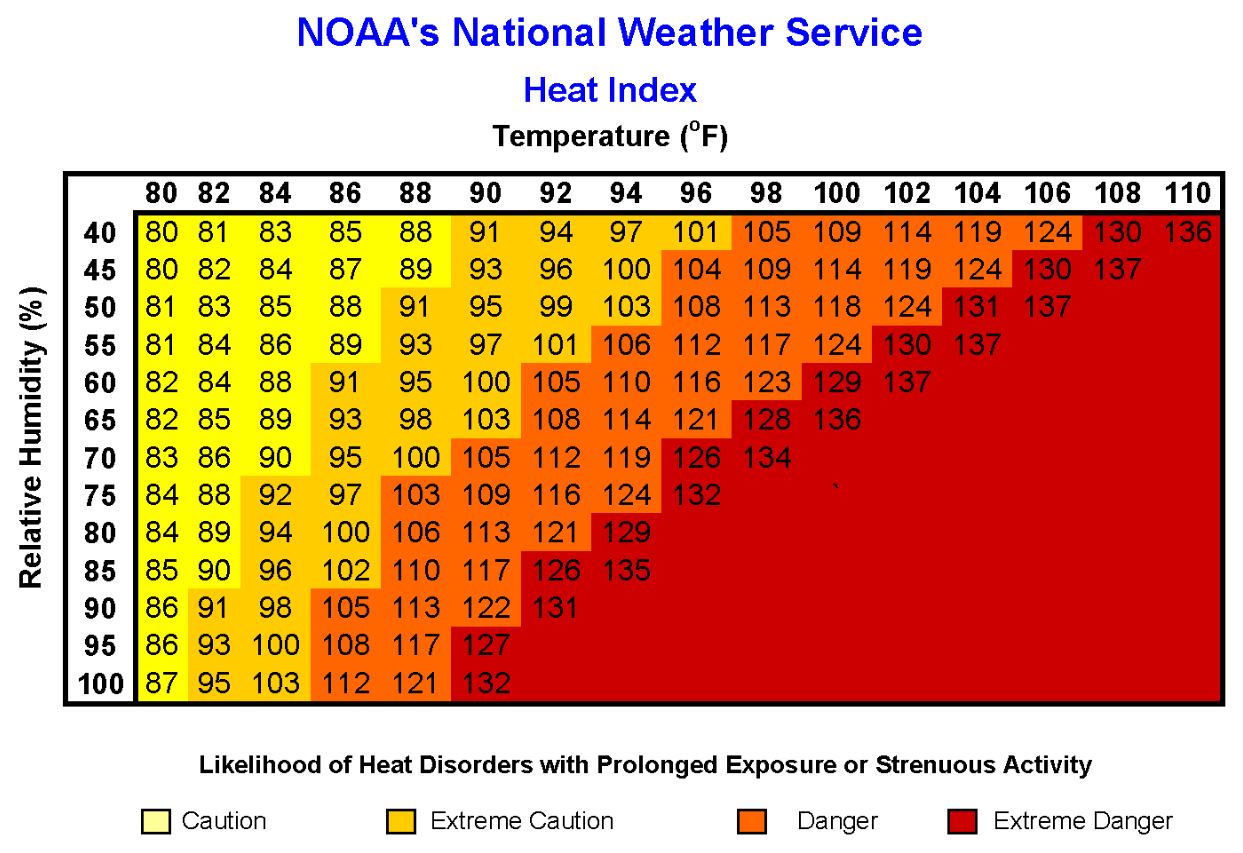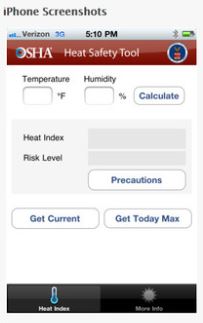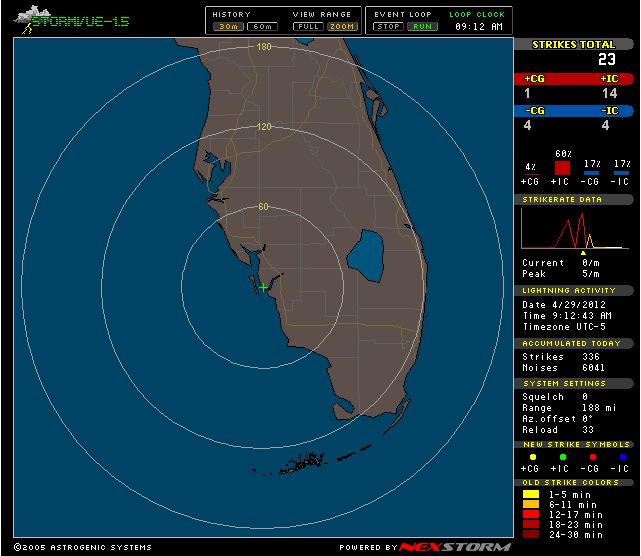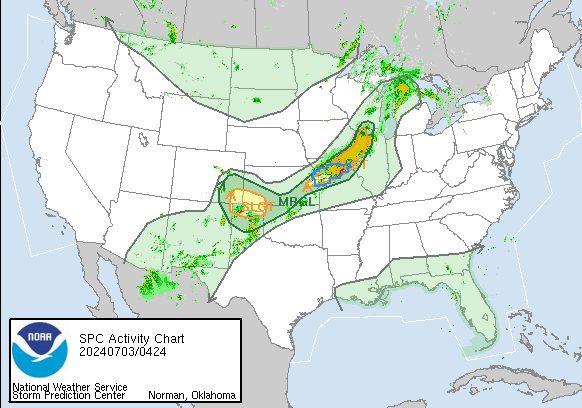|
Heat
is one of the leading weather-related killer in the United States, resulting in hundreds of fatalities each year. In the disastrous
heat
wave of 1980,
more than 1,250 people died. In the
heat
wave of 1995
more than 700 deaths in
the Chicago area were attributed to heat, making this the deadliest
weather event in Chicago history.
In August 2003, a record heat wave in
Europe claimed an estimated 50,000 lives.
South Florida is home to
high heat and high humidity. These two "Highs" can combine
making the "Apparent" or "Heat
Index" temperatures
dangerous to the human body.
This can be accelerated by being exposed to
high heat and or high humidity in direct sunlight and or high dry winds.
Also if wearing dark clothing. The Apparent or Heat Index value could be
as high as +15 degrees higher then what you calculate using the below
Heat Index Chart
Why
is heat a hazard?
The
body must get rid of excess heat to maintain a stable internal
temperature. It does this mainly through circulating blood to the skin
and through sweating.
When
the air temperature is close to or warmer than normal body temperature,
cooling of the body becomes more difficult. Blood circulated to the skin
cannot lose its heat. Sweating then becomes the main way the body cools
off.
But sweating is effective only if the humidity level is low enough
to allow for evaporation, and if body fluids and salts that are lost are
adequately replaced.
If
the body cannot expel excess heat, it will store it. If the body stores
this excess heat, the body's core temperature rises and the heart rate
increases.
As
the body continues to store heat, the person begins to lose
concentration and has difficulty focusing on a task, may become
irritable or sick, and often loses the desire to drink. The next stage
is most often fainting and even death if the person is not cooled down.
Who is at risk?
While anyone can become a victim
of a heat related emergency, those who work or
play in a high heat or combination of heat and high humidity environment
are at greater risk.
Who is at greatest risk?
Those at greatest risk for
heat-related illness include infants and children up to four years of
age, people 65 years of age and older, people who are overweight, and
people who are ill or on certain medications. Ask your doctor if current
medication makes you more susceptible to heat related stress or illness.
____________________________________________________________________
HEAT RELATED EMERGENCIES
Heat cramps
Muscular pains and spasms that
usually occur in the legs and or abdomen. Heat cramps are often an early
sign of heat related stress.
Heat exhaustion
Heat exhaustion can develop after
several days of exposure to high temperatures and inadequate or
unbalanced replacement of fluids. Those most prone to heat exhaustion
are elderly people, those with high blood pressure, and those working or
exercising in a hot environment.
What are the warning signs of
heat exhaustion?
- Heavy sweating
- Paleness
- Muscle cramps
- Tiredness
- Weakness
- Dizziness
- Headache
- Nausea or vomiting
- Fainting
Heat Stroke?
Heat stroke is the most serious
heat-related illness. The body can no longer control its temperature. The
body’s temperature rises rapidly, the sweating mechanism fails, and
the body is unable to cool down.
Body temperature may rise to 106°F or
higher within 10 to 15 minutes. Heat stroke can cause death or
permanent disability if emergency treatment is not provided.
What are the warning signs of a
heat stroke?
- An extremely high body
temperature (above 103°F)
- Red, hot, and dry skin (no
sweating)
- Rapid, strong pulse
- Throbbing headache
- Dizziness
- Nausea
- Confusion
- Unconsciousness
For First Aid and treatment,
consult your doctor or visit the Red Cross here
_____________________________________________________________________
Precautions
- Listen to a NOAA (National
Oceanic and Atmospheric Administration) Weather Radio for critical
updates from the National Weather Service (NWS).
- Never leave ANYONE or pets
alone in enclosed vehicles.
- Stay hydrated by drinking
plenty of fluids even if you do not feel thirsty. Avoid drinks with
caffeine or alcohol.
- Eat small meals and eat more
often.
- Avoid extreme temperature
changes.
- Wear loose-fitting,
lightweight, light-colored clothing. Avoid dark colors because they
absorb the sun’s rays.
- Slow down, stay indoors and
avoid strenuous exercise during the hottest part of the day.
- Postpone outdoor games and
activities.
- Use a buddy system when working
in excessive heat.
- Take frequent breaks if you
must work outdoors.
- Check on family, friends and
neighbors who do not have air conditioning, who spend much of their
time alone or who are more likely to be affected by the heat.
- Check on your animals
frequently to ensure that they are not suffering from the heat.
_____________________________________________________________________
Measuring
Heat Index.
- Find your current temperature and
humidity
- Use below chart and find where
known temperature & humidity intersect. That will be the Heat Index or Apparent temperature

IMPORTANT: Heat Index
values were devised for shady, light wind conditions, exposure
to full sunshine can increase heat index values by up to 15°F.
Also, strong winds, particularly with very hot, dry air, can be
extremely hazardous.
You can get the Heat Index by
using the NWS On-Line Calculator here
Want
to do the math ? Get the Heat Index equation formula here.
(Good Luck)
_____________________________________________________________________
OSHA Heat Safety Tool Mobile
App

App
allows you to calculate the heat index and based on the heat index,
displays a risk level. Then, with a simple tap, you can get reminders
about the protective measures that should be taken at that risk level to
protect workers or others from heat-related illness. Click
Here or
visit the Google Apps Store
Resources:
|


Lightning Radar

Interactive Radar

US Weather Maps



Live Local NOAA
All Hazards Radio
Contact PBC Skywarn Coordinator:
Maurice
Dake K9EE
561-374-4249 Assistant
Coordinator:
Ray Ruby WX4PBC
561-261-1224
wx4pbc@yahoo.com NWS
Skywarn WFO Miami
Robert
Molleda
305-229-4520 robert.molleda@noaa.gov Skywarn
Repeater:
146.670 -600 PL
110.9
Heat Related
Term
Heat Wave - Prolonged
period of excessive heat, often combined with excessive
humidity.
Heat Index - A number in
degrees Fahrenheit (F) that tells how hot it feels when relative
humidity is added to the air temperature. Exposure to full
sunshine can increase the heat index by 15 degrees.
Sun Stroke - Another term
for heat stroke.
Excessive Heat Watch
Conditions are favorable for an excessive heat event to meet or
exceed local Excessive Heat Warning criteria in the next 24 to
72 hours.
Excessive Heat Warning -
Heat Index values are forecast to meet or exceed locally defined
warning criteria for at least 2 days (daytime highs=105-110°
Fahrenheit).
Heat Advisory - Heat
Index values are forecast to meet locally defined advisory
criteria for 1 to 2 days (daytime highs=100-105° Fahrenheit).
|